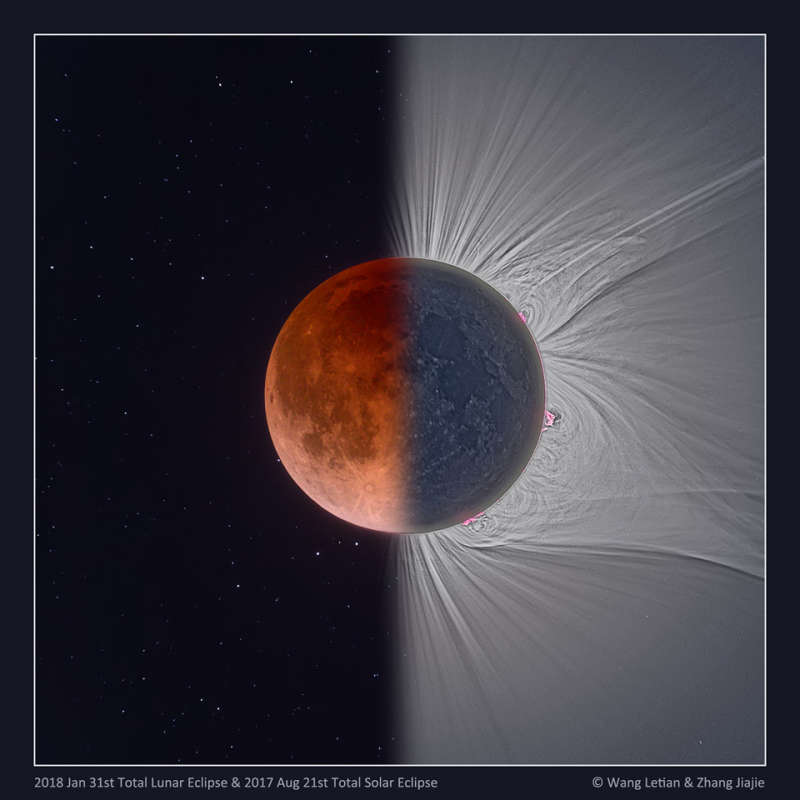Credit & Copyright: Wang Letian,
Zhang Jiajie
Explanation:
This digitally processed and composited picture
creatively compares two famous eclipses in one;
the total lunar eclipse (left)
of January 31,
and the total solar eclipse
of August 21,
2017.
The Moon appears near mid-totality in both the back-to-back total eclipses.
In
the lunar eclipse, its surface remains faintly illuminated in Earth's
dark reddened shadow.
But in the solar eclipse the Moon is in silhouette
against the Sun's bright disk, where
the otherwise dark lunar surface is just visible due to
earthshine.
Also seen in the lunar-aligned image pair
are faint stars in the night sky surrounding the eclipsed Moon.
Stunning details of prominences and coronal streamers surround
the eclipsed Sun.
The total phase of the Great American Eclipse of August 21 lasted
about 2 minutes
or less for locations along the Moon's shadow path.
From planet Earth's night side, totality for the Super Blue Blood Moon
of January 31 lasted
well over an hour.
1999 2000 2001 2002 2003 2004 2005 2006 2007 2008 2009 2010 2011 2012 2013 2014 2015 2016 2017 2018 2019 2020 2021 2022 2023 2024 2025 |
Yanvar' Fevral' Mart Aprel' Mai Iyun' Iyul' Avgust Sentyabr' Oktyabr' Noyabr' Dekabr' |
NASA Web Site Statements, Warnings, and Disclaimers
NASA Official: Jay Norris. Specific rights apply.
A service of: LHEA at NASA / GSFC
& Michigan Tech. U.
|
Publikacii s klyuchevymi slovami:
total solar eclipse - total lunar eclipse - polnoe solnechnoe zatmenie - lunnoe zatmenie
Publikacii so slovami: total solar eclipse - total lunar eclipse - polnoe solnechnoe zatmenie - lunnoe zatmenie | |
Sm. takzhe:
Vse publikacii na tu zhe temu >> | |
